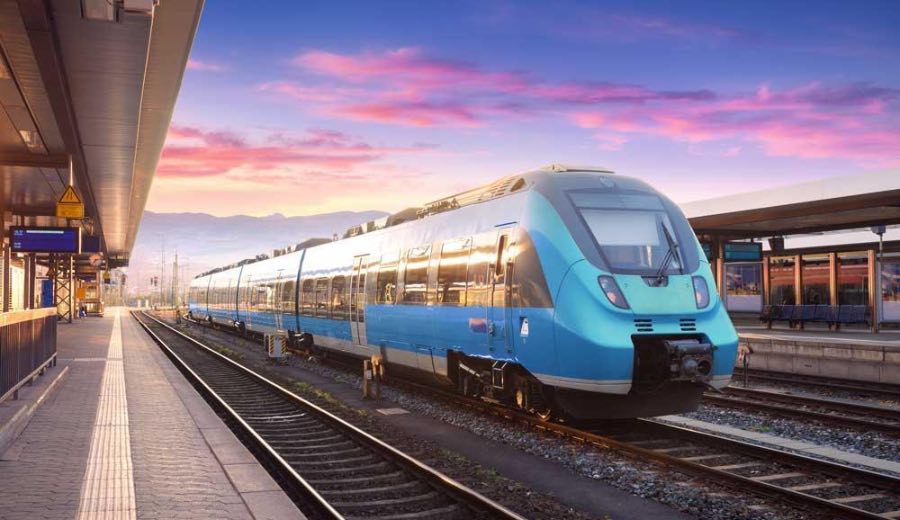
Railways are facing an increasingly urgent need to transition away from the outdated GSM-R telecoms technology. Benoît Leridon of Nokia emphasizes that understanding the investment required to develop a future-ready telecoms backbone for the 5G era is crucial.
“The railways are undergoing a massive transition from 2G to 5G technology. This is widely recognized,” says Benoît Leridon, Head of the Transportation Business for Network Infrastructure at Nokia. This transition is marked by the shift from GSM-R as a bearer network to 5G under the new FRMCS standards.
However, Leridon argues that focusing solely on the migration to FRMCS and managing GSM-R obsolescence oversimplifies the complexities involved. For instance, the GSM-R transition itself has significant implications for railways and infrastructure managers in terms of investing in and modernizing their telecoms network fixed backbone before considering a longer-term migration to 4G or 5G protocols.
“GSM-R over MPLS has been available for over a decade,” Leridon explains, “but only a few railways have adopted it.” Many of Nokia’s customers still use SDH technology in their backbone networks, which is becoming problematic due to difficulties in sourcing spare parts and finding qualified engineers for maintenance.
Additionally, network managers who have integrated GSM-R will need to enhance their backbone networks to support greater density and more cell sites, potentially increasing from 600 to 1,000 radio sites. Significant changes are also anticipated in data center architecture. While 2G standards could be supported using physical servers, future FRMCS capabilities will require full cloud functionality.
Leridon notes that these trends are not new, having emerged in the broader telecoms market over recent years, but they are issues rail customers must address within the next decade for a successful FRMCS migration.
“The 5G core in FRMCS will be provided as a fully cloudified application, necessitating extensive changes in data centers and tighter integration with the backbone,” he explains. “This approach, already in use by communications service providers, will also apply to rail customers.”
Deploying Independent Networks
Leridon believes that major railways globally will need to deploy their own IP networks to achieve the performance and reliability goals required for 5G applications such as train control, SCADA, and CCTV.
Functional aspects must be understood, especially if the IP network includes an optical layer. Under 5G, networks will require synchronization for fast handovers, which will involve both IP and optical layers. “If your optical layer underpins your IP network, it must also provide clocking functions,” Leridon explains.
Focus on Cybersecurity
The evolution of the telecoms backbone will place greater emphasis on cybersecurity, driven by the aspiration of many rail operators to implement digital signaling, such as ETCS, and potentially Automatic Train Operation.
“We can already provide the necessary security for these applications,” Leridon says, but he anticipates increased regulatory focus on network infrastructure in the coming years. “Standardized 5G encryption will protect the core of the radio network under an FRMCS scenario, but additional networked services will require their own encryption layers.”
Challenges with Dynamic Transport Slicing
Leridon is cautious about how quickly rail customers will adopt Dynamic Transport Slicing, which theoretically allows network capacity to be allocated to specific applications. This approach, however, involves significant complexity and high bandwidth requirements. Even communications service providers are only tentatively testing it.
“Typically, rail customers wait five years after technology is adopted by service providers before using it,” he adds. Spectrum allocation issues further complicate this, as FRMCS will not provide significantly more bandwidth, limiting critical communications applications without benefiting from slicing.
The Future of GSM-R
Leridon predicts that GSM-R will need to remain in use until at least 2035. “The telecoms backbone for railways in many major markets still relies on SDH, which poses a problem as spare parts become scarce and engineers opt for modern technologies,” he explains.
Railways face tough decisions on managing this transition. Two strategies include developing a new telecoms backbone with embedded GSM-R, creating a 'pre-FRMCS' network, or adopting an interim architecture like OTN. However, Leridon warns that the latter could be risky if investments in OTN nodes become obsolete quickly.
The urgency of the situation is clear. “Railways can no longer rely on GSM-R for a few more years. The situation is critical, and action is necessary,” Leridon emphasizes. “We are approaching game over for GSM-R, even if it remains in use for another decade.”
Benoît Leridon is Head of the Transportation Business, Network Infrastructure, at Nokia. He was interviewed by Nick Kingsley, Executive Editor at Railway Gazette Group. (Originally posted on: www.railwaygazette.com)